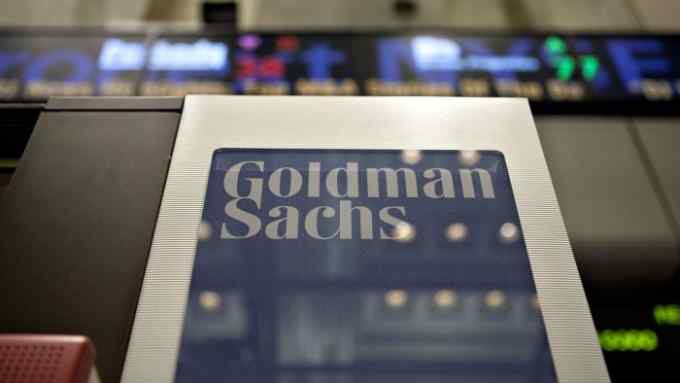Passive ETFs are cheap, but stockpickers cannot be ignored

Simply sign up to the Exchange traded funds myFT Digest -- delivered directly to your inbox.
Latest news on ETFs
Visit our ETF Hub to find out more and to explore our in-depth data and comparison tools
Traditional passive exchange traded funds are cheap. An investor looking for passive exposure to a mainstream market such as the S&P 500 or FTSE 100 can now expect to pay fund charges of less than 0.1 per cent, while price wars have continued to drive down fees on products such as gold ETFs in recent years.
But ETFs now face heightened competition from the world of stockpicking. Investment trusts, which serve as a pure play on active management, have seen their share prices tank in the sell-off of the past year. Such falls have notably outpaced drops in the stated value of the underlying portfolios, effectively giving investors the opportunity to buy in at a discount. Analysts at Peel Hunt recently compared the bargains on offer with those available in the wake of the financial crash, with private equity and property trusts looking especially cheap alongside growth-minded funds such as sector stalwart Scottish Mortgage (SMT).
This may well present a more obvious buying opportunity than piling into an S&P 500 tracker. But price tag aside, can investment trusts lure buyers away?
At the risk of rehearsing an old argument, it has become something of a truism that active funds have offered very patchy returns. The latest BMO Fund Watch report, which gauges the extent to which active funds are consistently outperforming, saw the smallest number of funds in more than a decade generate top quartile returns over three consecutive 12-month periods, while studies such as the S&P Dow Jones Indices Scorecards have tended to show many active funds failing to beat the market over periods of 10 years or longer.
And yet some hope the tide has turned. Big global equity trusts F&C (FCIT), Brunner (BUT) and Alliance Trust (ATST) have all outperformed the MSCI World index in the past year, thanks to their portfolios having less exposure to underperforming companies such as the US tech giants. One argument maintains that the tech stocks dominant in that index will no longer drive market gains in an era of tighter monetary policy — leaving active managers to make superior returns from good stockpicking.
Trusts do stand out in such a scenario thanks to structural advantages. They can use debt, or gearing, to put more cash to work, while trust managers are often free to take big positions in their top holdings.
Such traits, however, are a double-edged sword. Punchy levels of gearing can leave trusts exposed to painful losses in falling markets and big position sizes can bring their own risks — as European Opportunities (EOT) manager Alexander Darwall found with his backing for collapsed payments group Wirecard. Trusts also still struggle to beat the likes of ETFs on fees, even if share price discounts look enticing.
“It may be preferable for smaller investors to invest their core money in boring and predictable ETFs and maybe invest a small proportion of their savings opportunistically in investment trusts,” 7IM senior investment manager Peter Sleep said.
ETFs struggle, however, to compete with trusts in more specialist corners of the investment universe. One example is funds investing with an eye to environmental, social and governance outcomes, where some believe a stockpicker can do a better job of finding “good” companies (or excluding bad ones) than a set of index methodology rules. “Differing ESG criteria from provider to provider can result in vastly different holdings and therefore very different performance, so it’s important to look beyond the name of the product and the charges,” Ryan Hughes, AJ Bell head of investment partnerships, noted.
The other area where ETFs face challenges is in so-called “alternative” assets, a term that covers investments outside equity and bond markets, from physical infrastructure and property to private equity, ship leasing and music royalties. Such areas tend to promise returns that are uncorrelated to what happens in stock markets and economies. HICL Infrastructure (HICL), for example, offers exposure to assets such as hospitals with government-backed revenues.
ETFs may struggle to tap into such assets directly but, as with active equity funds, alternatives come with their own problems. Infrastructure funds, for example, showed a worrying correlation to bonds when the latter sold off in late 2022, offering less protection in a crisis than some might have hoped. Idiosyncratic problems can also emerge, from board room spats at Scottish Mortgage to a short seller attack on Home Reit (HOME) and the suspension of the trust’s shares.
Investors do need to look beyond ETFs for certain exposures, but there are a number of factors to consider before committing money to any investment.

Comments